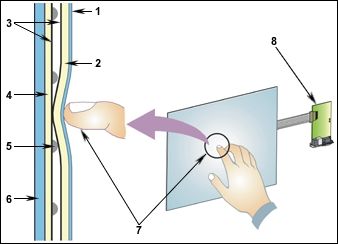Capacitive touch screen faces three main problems: power consumption, noise cont
Date:2019-04-26
The designers of capacitive touch screen face three main problems: power consumption, noise control and gesture recognition.

1. Power consumption
The power consumption of capacitive touch screen is one of the key system problems to be considered. Devices such as tsc3060 of Ti are designed according to the requirements of low power consumption. Under the standard operating conditions, the power consumption of the system is less than 60mA. When detecting touch behavior, it can consume as low as 11 µ A。 In the same working condition, it is at least one order of magnitude lower than its competitors.
Many of the solutions on the market are designed as microcontrollers at first, and then gradually develop into capacitive touch screen controllers. The device designed as a capacitive touch screen controller at first has no redundant hardware that will consume additional current and clock period. Most systems have a main CPU, which can be a digital signal processor, a microprocessor, or a microcontroller unit (MCU). So why add another engine to a system that has been precisely adjusted? Tsc3060 is a special design without microcontroller.
2. Noise control
If the controller cannot distinguish between actual touch and potential interference source, let alone realize the long battery life. The main noise source of touch screen is usually from LCD, which ultimately depends on the tradeoff between quality and cost. AC common ground LCD is usually cheaper, but noise levels are higher. DC common ground LCD has DC shielding, which can reduce noise, but it will increase cost.
A typical way to help reduce the amount of noise that ITO sensors and touch screen controllers can perceive is to maintain a certain air gap between the LCD and ITO. This allows a certain distance between the two, thus reducing mutual interference. Another way to deal with noise is to use filters. For example, tsc3060 contains a set of programmable hybrid signal filters that can be used to reduce noise. These filters are installed in the hardware through an integrated MCU. This means that they can accomplish tasks nearby faster than filters using software. The rapid response to the actual touch coordinates can also reduce the total system resource consumption.
3. Gesture recognition
The last design problem is gesture recognition. Gestures are not necessarily large, complex waves. Gestures can be simple one finger slide. MCU can easily identify some simple gestures, such as pinch, pull, zoom, rotation, double click and triple hit, and can be "internal" processing. Adding a dedicated engine may reduce the bandwidth processing load of MCU, but it will increase the power consumption. In addition, the special engine is used to complete the proprietary algorithm of gesture recognition, which can not be seen by designers.
